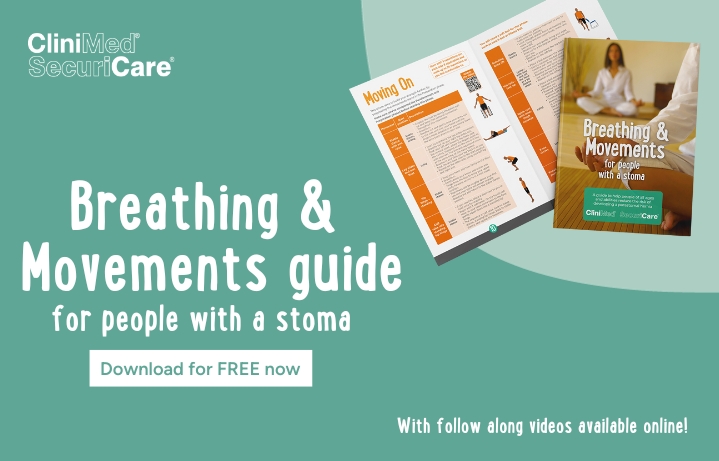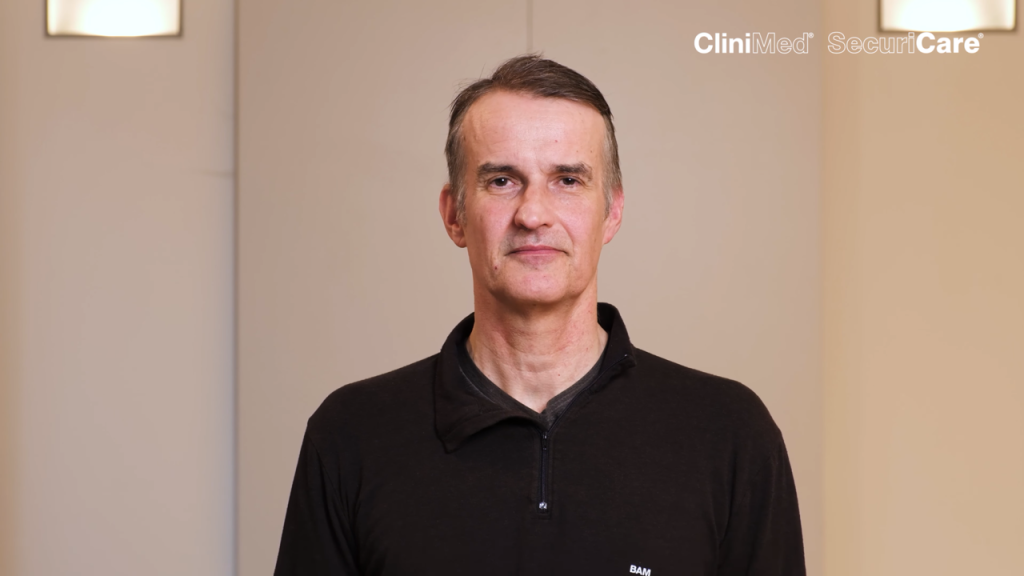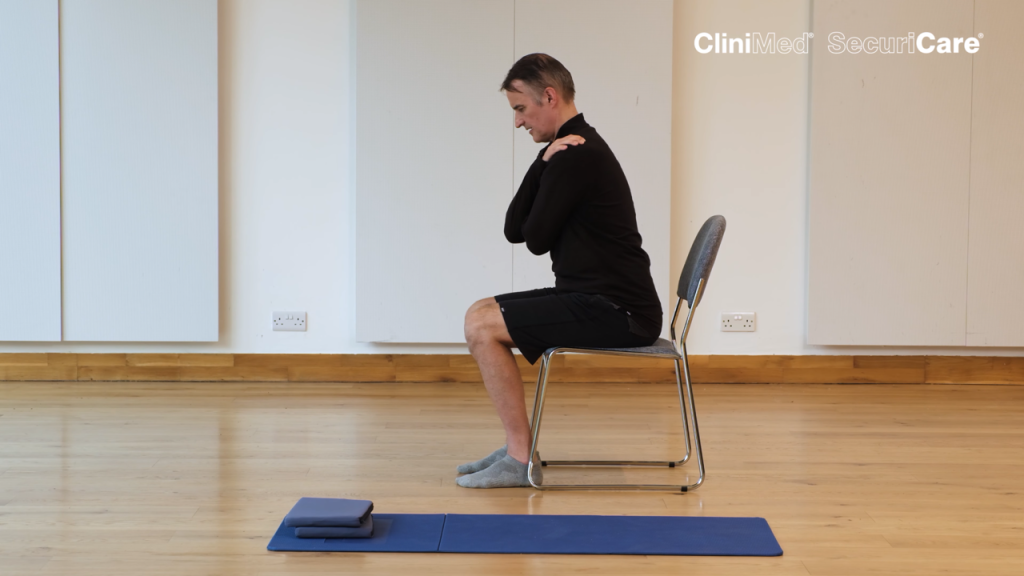Breathing and Movements: Reducing the Risk of Parastomal Hernias
01 November, 2023

This is a sponsored post by CliniMed
CliniMed and SecuriCare’s new Breathing and Movements programme is designed to help individuals of all ages and abilities reduce the risk of developing a parastomal hernia, and to assist those already managing a hernia to improve comfort and reduce the risk of any further complications. Developed by Andy, a Pilates instructor who underwent stoma surgery in January 2020, in collaboration with a team of SecuriCare Stoma Care Nurses, this programme combines the knowledge of a qualified Pilates instructor with the expertise of specialist healthcare professionals.
The Story Behind Breathing and Movements
Andy’s personal journey and experience with stoma surgery served as the inspiration behind the Breathing and Movements programme. His passion for exercise and safe movement, combined with his dedication to promoting wellbeing, led to the creation of this comprehensive but easy to follow programme. It’s designed to help individuals establish a strong foundation for safe movement in their daily lives and during exercise. It focuses on developing the muscles throughout the body and teaches how to engage them effectively, ultimately reducing the risk of developing a parastomal hernia.
Interested? Download the Breathing and Movements eBook at www.clinimed.co.uk/breathing-and-movements-guide

Andy is a qualified Pilates instructor who underwent stoma surgery in January 2020
Key Focus Areas
The Breathing and Movements programme is structured around four key areas, each crucial in minimising the risk of developing a parastomal hernia:
- Breathing
Proper breathing techniques can help to reduce the risk of parastomal hernia development. This programme will help you understand how to breathe effectively, breathing in a way which ensures you don’t put unnecessary pressure on the abdominal muscles.
- Core Connection
Your core muscles are your body’s support system and using them to support movement can help to reduce the risk of developing a parastomal hernia. The Breathing and Movements programme will guide you in identifying and engaging these crucial muscles, providing added protection to the area around your stoma.
- Stability
Achieving stability and aligning the body is a key element in reducing the risk of parastomal hernias, particularly during activities that involve lifting or any strenuous efforts. This program will teach you how to keep your body stable, reducing the likelihood of injury and hernia development.
- Strength
Building muscular strength is not only essential for overall fitness but also plays a vital role in preventing parastomal hernias. By following the Breathing and Movements programme, you’ll develop strength in the right areas, further reducing the risk of hernia development by supporting the important muscles around your stoma.

Andy demonstrating the sitting hip hinge
Why Parastomal Hernia Prevention Matters
Parastomal hernias are a common complication associated with stoma surgery, making prevention essential. Breathing and movements are fundamental aspects of this preventative strategy.
By learning how to move safely and reduce pressure on the abdominal area, you can reduce the risk of parastomal hernia development whilst also promoting general health and wellbeing. The Breathing and Movements programme provides comprehensive, step-by-step instructions and guidance to help you build confidence in these essential areas. However, if you have any questions or concerns about parastomal hernias, it’s always advisable to seek advice from a Stoma Care Nurse or Healthcare Professional.
Download the FREE Breathing and Movements eBook at www.clinimed.co.uk/breathing-and-movements-guide
You can also watch video demonstrations of the Breathing and Movements programme on the CliniMed YouTube channel.
PID 11421



